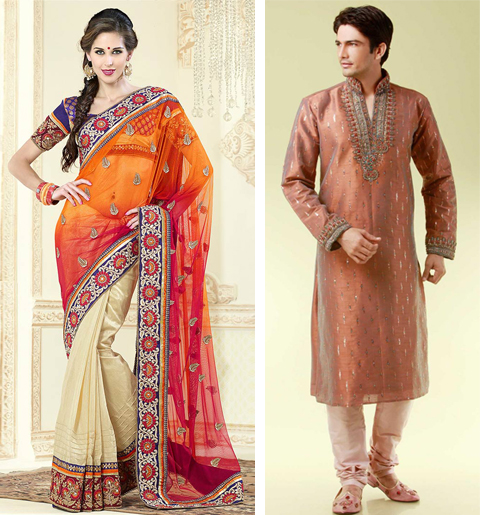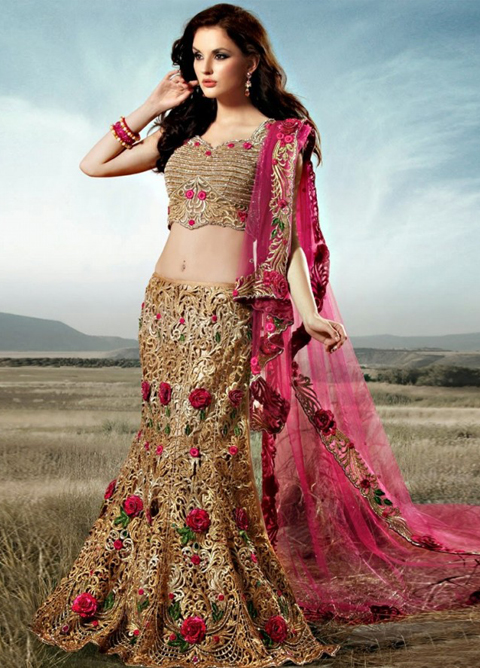The Enduring Elegance of Indian Women's Traditional Clothing

Across the vast and vibrant tapestry of India, a single thread weaves through its diverse cultures: the exquisite artistry of its traditional clothing. To speak of Indian women's attire is to embark on a journey through centuries of tradition, symbolism, and evolving aesthetics. These garments are not mere fabrics; they are narratives, whispered through generations, of regional identities, religious beliefs, and artistic expression. What stories do these intricate ensembles tell, and what can we learn from their enduring presence in a rapidly changing world?
From the flowing grace of the saree to the tailored elegance of the salwar kameez, Indian women's traditional garments represent a spectrum of styles, each unique in its draping, embellishment, and cultural significance. Consider the saree, a single length of unstitched fabric, transformed into a breathtaking garment through intricate folds and drapes. It's a testament to ingenuity and adaptability, reflecting the diverse climates and traditions of the subcontinent. The salwar kameez, with its tunic, trousers, and flowing scarf, offers a more practical yet equally elegant alternative, reflecting a blend of cultural influences. Beyond these two iconic garments, a plethora of regional variations further enriches the landscape of Indian women's traditional clothing.
The history of these garments is as rich and layered as the fabrics themselves. Ancient texts and sculptures offer glimpses into the evolution of Indian attire, showcasing the influence of various empires and cultural exchanges. The Mughal era, for instance, introduced intricate embroidery and opulent fabrics, adding another dimension to the existing traditions. These garments bear witness to India's complex history, reflecting the interwoven threads of indigenous customs and external influences.
The importance of traditional Indian women's clothing transcends mere fashion. These garments are deeply intertwined with cultural identity, religious practices, and social customs. A particular style of saree might signify marital status, while the vibrant colors and motifs often hold symbolic meaning, representing prosperity, fertility, or spiritual beliefs. The act of draping a saree itself is often a ritual, passed down through generations, connecting women to their heritage.
However, the preservation and appreciation of these traditional garments face challenges in a globalized world. The allure of Western fashion, coupled with the fast-paced nature of modern life, has led to a decline in the everyday wearing of traditional attire among some segments of society. Yet, there's a growing movement to revitalize these traditions, celebrating their timeless beauty and cultural significance. Designers are experimenting with new fabrics and silhouettes, while younger generations are rediscovering the elegance and empowerment that comes with embracing their heritage.
Three benefits of wearing these garments are: fostering a sense of cultural identity, supporting local artisans, and promoting sustainable fashion. By wearing traditional attire, women connect with their heritage and contribute to the preservation of cultural practices. The intricate craftsmanship involved in creating these garments provides livelihoods for countless artisans, preserving traditional skills and techniques. Furthermore, the use of natural fabrics and handcrafted techniques promotes sustainable fashion practices.
Advantages and Disadvantages of Traditional Indian Women's Clothing
| Advantages | Disadvantages |
|---|---|
| Represents Cultural Identity | Can be time-consuming to drape/wear |
| Supports Local Artisans | May not be suitable for all occasions in modern life |
| Promotes Sustainable Fashion | Can be expensive depending on the fabric and embroidery |
Five real examples of traditional Indian women's clothing include: the Banarasi silk saree from Varanasi, known for its intricate gold brocade; the Kanjeevaram silk saree from Tamil Nadu, with its vibrant colors and temple borders; the Phulkari dupatta from Punjab, embroidered with bright floral patterns; the Bandhani saree from Gujarat and Rajasthan, featuring tie-dye patterns; and the Mekhela Chador from Assam, a two-piece draped garment.
FAQs:
1. What is a saree? A saree is a long piece of unstitched fabric, typically 5-9 yards, draped around the body.
2. What is a salwar kameez? A salwar kameez consists of a tunic (kameez), trousers (salwar), and a scarf (dupatta).
3. What are some popular fabrics used? Silk, cotton, linen, and chiffon are commonly used.
4. Are there regional variations? Yes, each region of India has its unique styles and draping techniques.
5. What occasions are these garments worn for? Weddings, festivals, religious ceremonies, and other special occasions.
6. Where can I buy traditional Indian clothing? Specialty stores, online retailers, and local markets.
7. How do I care for these garments? Dry cleaning is often recommended for delicate fabrics.
8. Can I wear traditional Indian clothing if I'm not Indian? Absolutely! Appreciating and respecting other cultures is encouraged.
In conclusion, the enduring elegance of Indian women's traditional clothing speaks volumes about India's rich cultural heritage. From the vibrant colors and intricate embroidery to the graceful drapes and flowing silhouettes, these garments are not just pieces of clothing; they are embodiments of art, history, and tradition. By embracing and celebrating these timeless ensembles, we not only honor the past but also contribute to the preservation of a vital part of India's cultural identity. Let us continue to explore the diverse world of Indian women's attire, appreciating its beauty and significance for generations to come. Whether you choose to wear a saree, a salwar kameez, or any other traditional garment, you are partaking in a living tradition, a testament to the enduring power of cultural expression. Explore, appreciate, and embrace the beauty of Indian women's traditional clothing – a vibrant thread in the rich tapestry of human creativity.
Deciphering the jeep grand cherokee code u0403 00
The art of gridded love drawings exploring pixelated romance
Chevrolet camaro le mans a racing legacy











